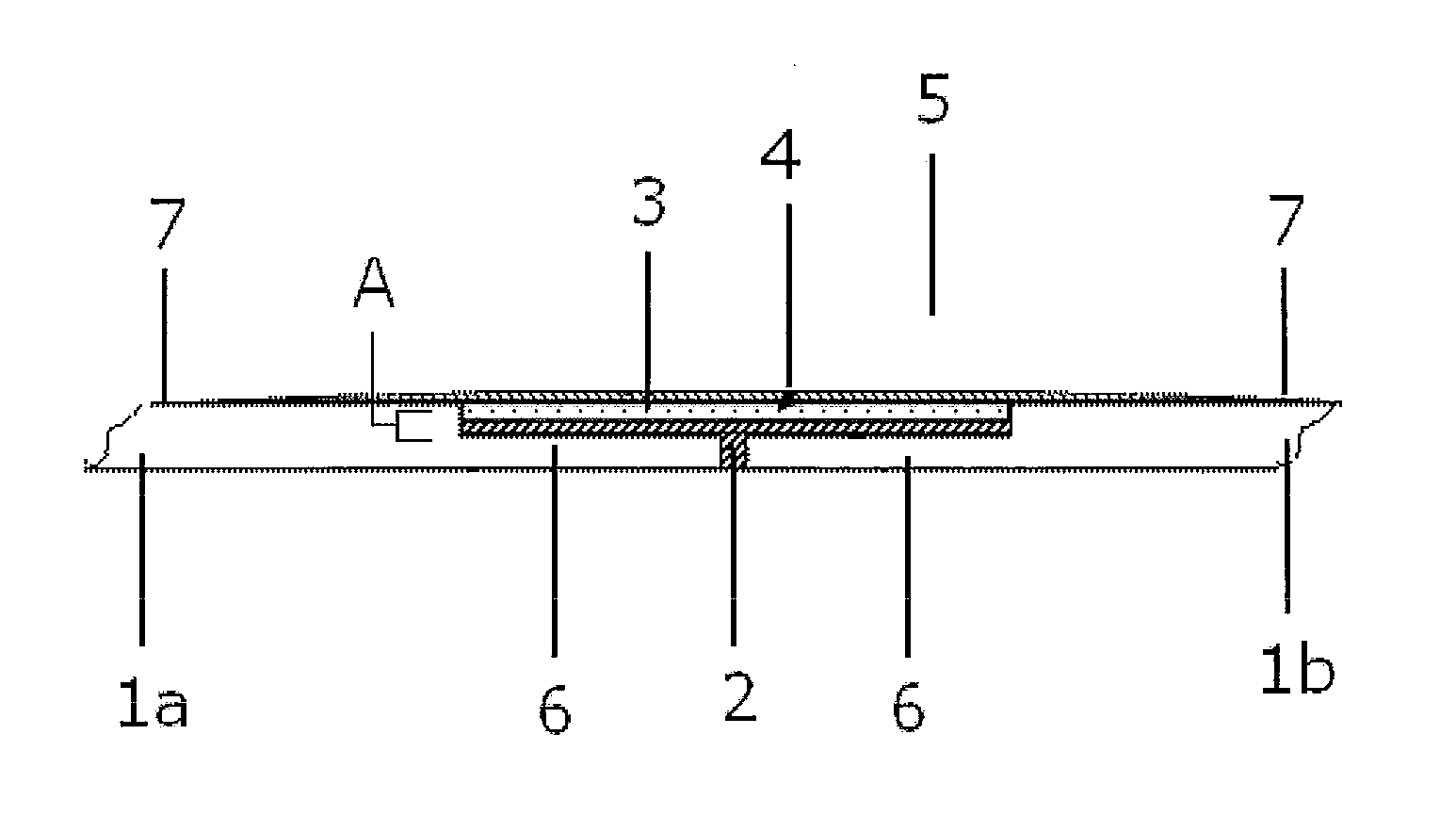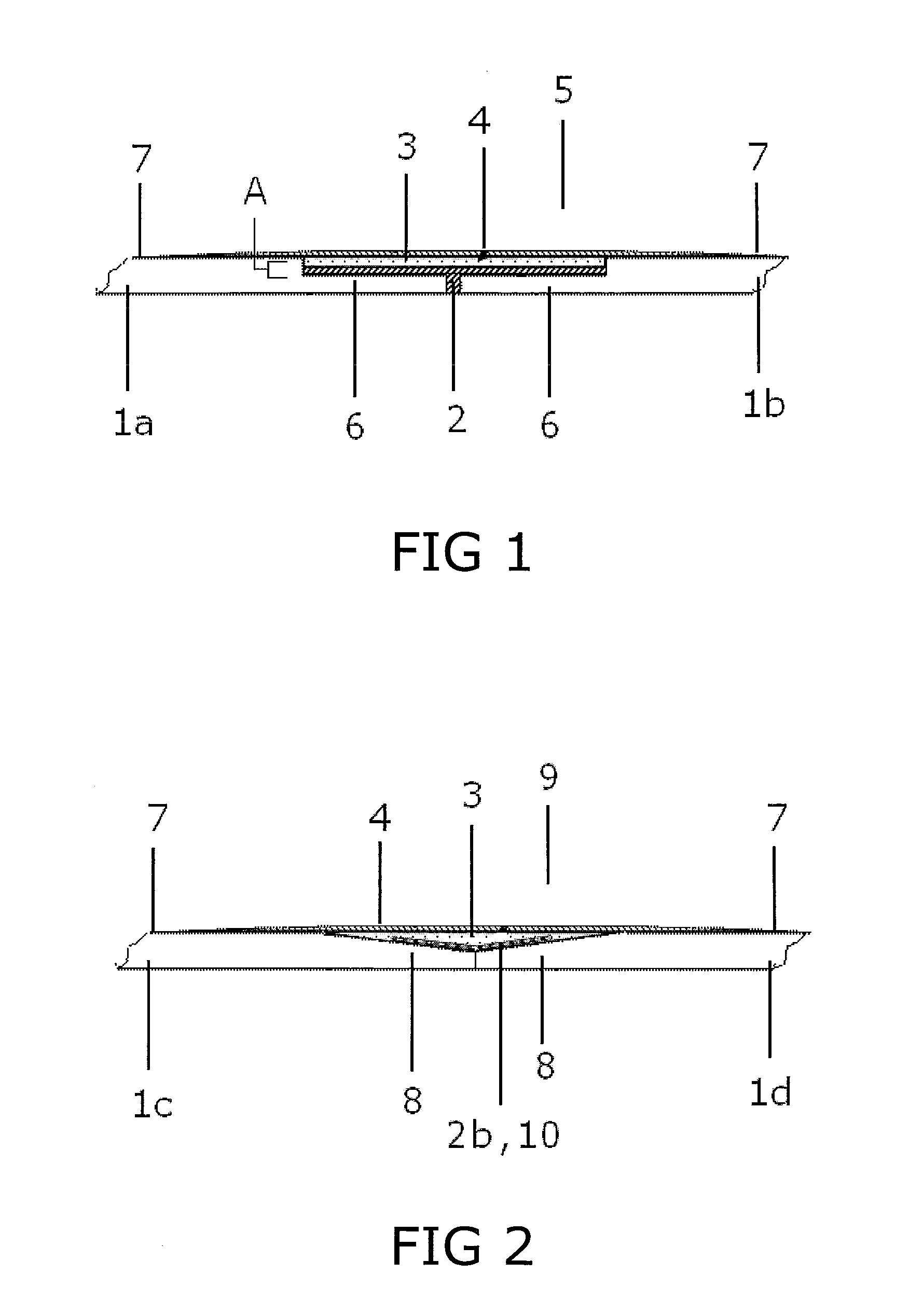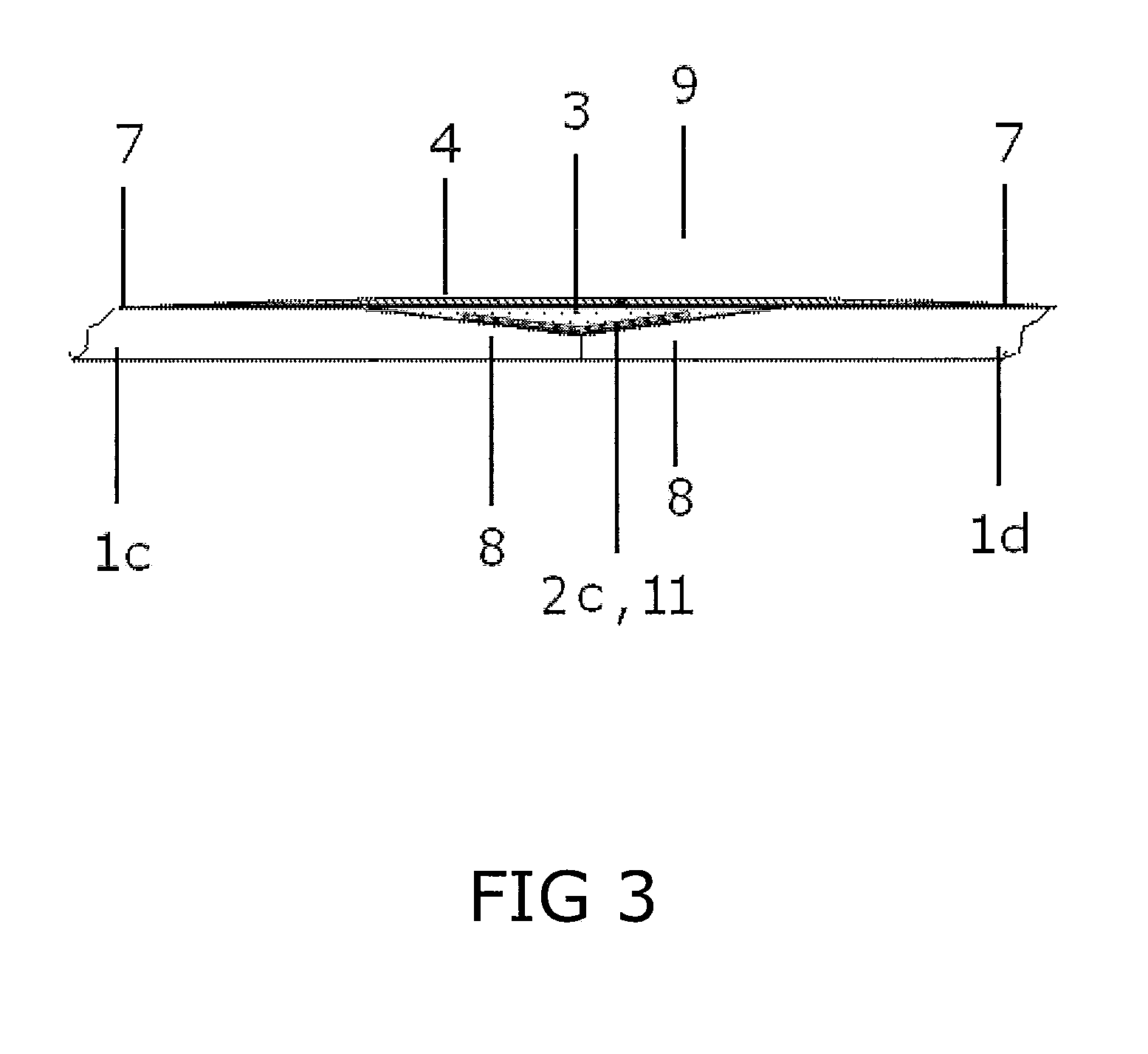Plasterboard Jointing System
a jointing system and plasterboard technology, applied in lamination, mechanical control devices, structural elements, etc., can solve the problems of incomplete setting, affecting the strength of the joint, waste of products, etc., and achieve the effect of reducing installation delays and shrinkag
- Summary
- Abstract
- Description
- Claims
- Application Information
AI Technical Summary
Benefits of technology
Problems solved by technology
Method used
Image
Examples
example 1
Use of Alpha Gypsum Hemihydrate Connective Material
[0120]The side edges of two plasterboards 1a, 1b were abutted together and a connective material 2 was applied as a first layer in the recess 5. The connective material 2 was formulated using the following compounds:[0121]95.30% w / w Alpha plaster (Hydrostone TB);[0122]0.10% w / w Calcium hydroxide (hydrated lime);[0123]1.00% w / w PVAL (polyvinyl alcohol);[0124]2.00% w / w EVA powder;[0125]0.30% w / w Sorbitol;[0126]0.20% w / w Modified cell ether (methyl cellulose, such as the proprietary product “Mecellose™ FMC 7150”, manufactured and sold by Samsung Fine Chemicals Co, Ltd of South Korea);[0127]0.05% w / w SMA; and[0128]1.00% w / w 3 mm length fibreglass strands
[0129]After the connective material 2 was applied to the recess 5, it was allowed to cure for 45 min. Once the connective material 2 was sufficiently cured, a joint filling compound 3 was applied to the recess over the connective material. The joint filling compound 3 was spread out usin...
example 2
Use of Plaster Coated Reinforcing Mesh Connective Material with Pre-Wet Technique
[0131]The side edges of two plasterboards 1c, 1d were abutted together and a connective material 2b was applied as a first layer in the recess 9. The connective material 2b was a proprietary bandage, Gypsona™ Extra 3, which is manufactured and sold by BSN Medical SAS of Vibraye, France.
[0132]In one example, water, which is a reactive element or catalyst, was initially applied with a damp sponge and / or water brush to the recessed edge portion 9 of both of the side edges of the two plasterboards 1c, 1d. In a second trial, water, which is a reactive element or catalyst, was initially applied with a damp sponge and / or water brush to the underside of the Gypsona™ Extra 3 plaster coated reinforcing mesh 10. In both trials, after the water had been applied, the Gypsona™ Extra 3 plaster coated reinforcing mesh 10 was then applied as a first layer in the recess 9.
[0133]After the connective material 2b was applie...
example 3
Use of Self Adhesive Plaster Coated Reinforcing Mesh Connective Material
[0135]The side edges of two plasterboards 1c, 1d were abutted together and a connective material 2b was applied as a first layer in the recess 9. The connective material 2b was a proprietary bandage, Gypsona™ Extra 3, which is manufactured and sold by BSN Medical SAS of Vibraye, France. The Gypsona™ Extra 3 bandage was initially coated with a spray adhesive, HB Fuller Spray Bond Removable clear spray adhesive.
[0136]The connective material 2b was applied to the recess 9 by sticking the bandage to the recess by way of the spray adhesive coating. After the connective material 2b was applied to the recess 9, a joint filling compound 3 was applied to the recess over the connective material. The joint filling compound 3 was spread out using a trowel or some other suitable implement to create a substantially smooth finish. Finally, a finishing compound 4 was then applied over the joint filling compound, which was initi...
PUM
| Property | Measurement | Unit |
|---|---|---|
| compressive strength | aaaaa | aaaaa |
| length | aaaaa | aaaaa |
| shrinkage | aaaaa | aaaaa |
Abstract
Description
Claims
Application Information
 Login to View More
Login to View More - R&D
- Intellectual Property
- Life Sciences
- Materials
- Tech Scout
- Unparalleled Data Quality
- Higher Quality Content
- 60% Fewer Hallucinations
Browse by: Latest US Patents, China's latest patents, Technical Efficacy Thesaurus, Application Domain, Technology Topic, Popular Technical Reports.
© 2025 PatSnap. All rights reserved.Legal|Privacy policy|Modern Slavery Act Transparency Statement|Sitemap|About US| Contact US: help@patsnap.com



